Mass transit agencies around the world face the same conundrum: How to make what amounts to four straight lines distinctive.
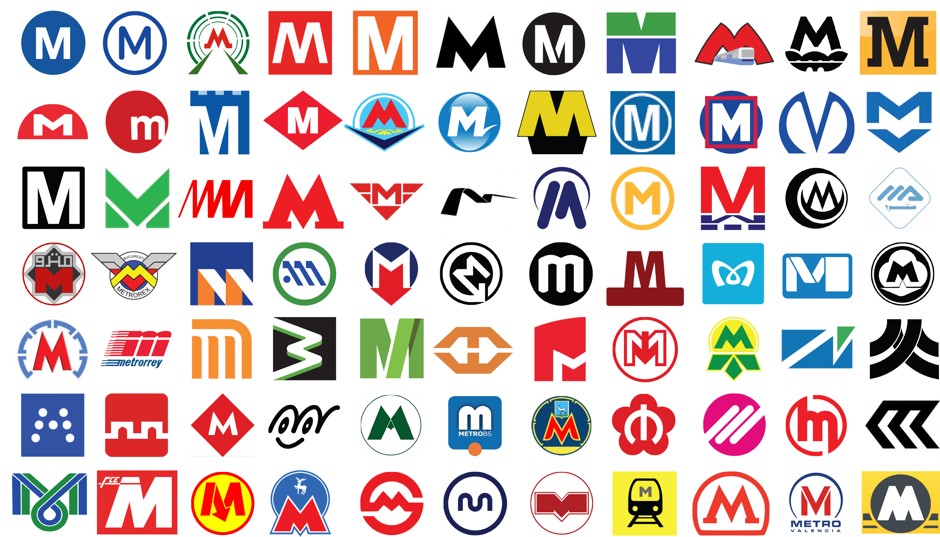
But transit agencies also go to some great lengths to render the letter in a way that’s uniquely theirs. With the help of the Metrobits blog we’ve identified at least 77 different M logo designs that are currently (or were recently) in use—gathered here in no special order (and listed in full at the bottom of this post). Considering that an M consists of a mere four straight lines, the group is a pretty impressive feast of diversity.
You’ve got floating M’s. Squares and circles and other geometric backdrops. Tiny notches or flairs. Rather outrageous flourishes. Capital and lowercase M’s alike. There are lots of allusions to motion: from tracks to tunnels to a train itself. Several arrows point downward, in what’s hopefully not meant as a reflection of ridership trends. There are animal cameos, including what seems to be a goat. Several M’s have been given wings in some sort of transport-related identity crisis. M’s are made of both dots and single wavy lines. Abstractions abound. One M is an emoticon. Another is shaped as a heart, in a nod to loving service. Another really looks as if it’s wearing a snug pair of green and yellow undies.
To gain insight into why a transit agency would bother to put so much effort into its M logo, we turned to whiz graphic designer Michael Bierut of Pentagram. His initial response: maybe they shouldn’t. “I think it’s all part of some full-employment program for graphic designers,” he (half) jokes.
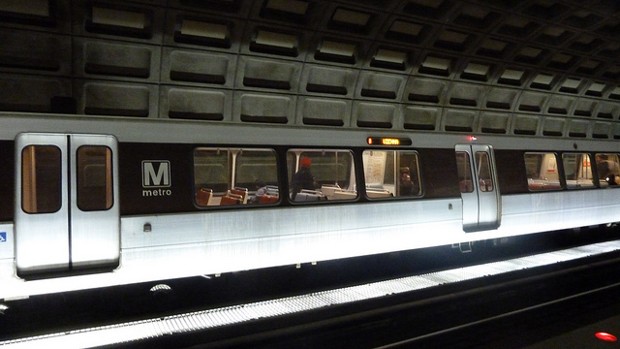
“No matter how good logo is, people will come to associate that logo with an unpleasant experience,” he says, “and it’ll all be for naught.”
After studying these 77 M’s for far too long, a few natural categories emerged.
Sticking to the Basics
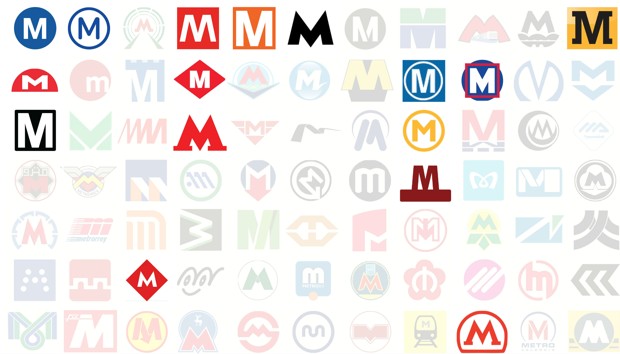
“If you do it with enough confidence,” says Bierut, “people will figure it out.”
Bierut says the first thing he would do if tasked with designing a metro transit M is reconcile it with other signs in the system. Take the logo for the Metropolitan Transportation Authority (which didn’t make our cut because it uses all three letters: MTA). The circle gives a hint of a tunnel, but it also matches the circular backgrounds of the individual numbered and lettered lines of the subway system.
“I would say that consistency is more important than cleverness,” says Bierut. “Consistency is actually really hard to achieve. Cleverness is a cheap commodity.”
Slight Tweaks
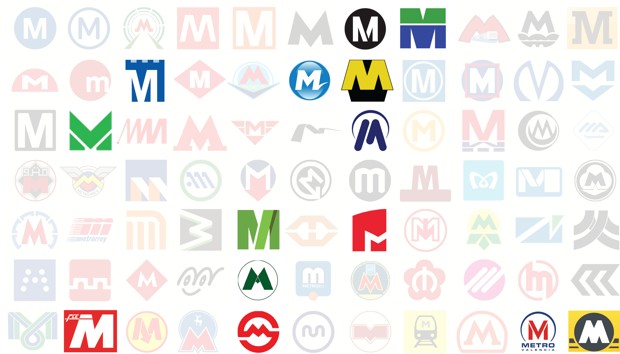
Bierut says there can be value in creating slight tweaks that people come to associate with a specific metro M. (Among other things, it ensures that other public agencies using the logo ask for the official version instead of popping in any old M they see as similar.) Distinctiveness doesn’t take much to achieve, he says, and the recognition value it produces might be worth the small effort.
“I think one of the tricks with doing that sort of modification is that sort of designates that M as the official M, even if it doesn’t really mean anything beyond that—even if it doesn’t have any actual semantic value,” he says.
Lowercase or Rounded Letters
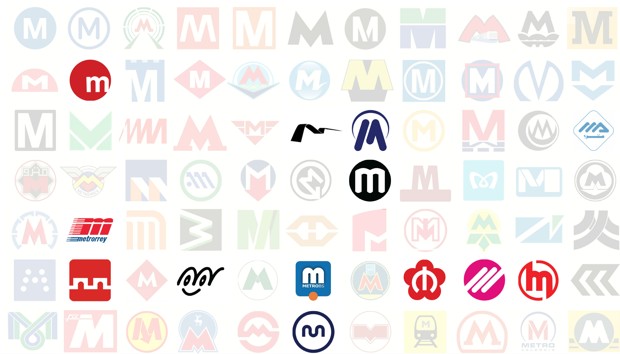
Bierut points out that the rounded elements of the lowercase M also provide a chance to echo the nature of a certain transit system. “If it goes through a subway or goes over an arched bridge, or things like that, you could argue it has some direct picture of the thing it’s depicting, to a certain degree,” he says. Take a look at the Rennes, France logo, for instance, and see if you can’t detect the hint of two tunnels.
Motion
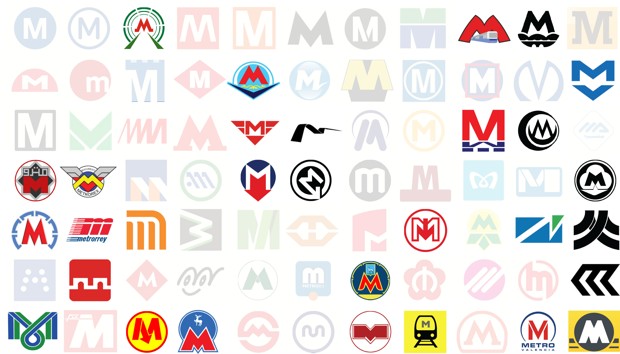
Two sub-classes of motion M’s take the concept of movement into unexpected directions. Several M’s have wings, Prague and Bucharest among them, which somewhat awkwardly reminds people how much slower trains are than planes. The Dnepropetrovsk (Ukraine) M, meanwhile, is arguably resting on a cloud. Still other metros pair the wonders of urban rail technology with … remote wildlife. Looking at you, Samara (Russia) goat and Nizhny Novgorod (Russia) deer.
Arrows are another recurring theme related to motion—uniformly pointing underground, just in case you didn’t know where the metro ran. Sofia (Bulgaria), Warsaw (Poland), Lille (France), and Istanbul (Tukey) are among the M logos that come with their own wayfinding guides.
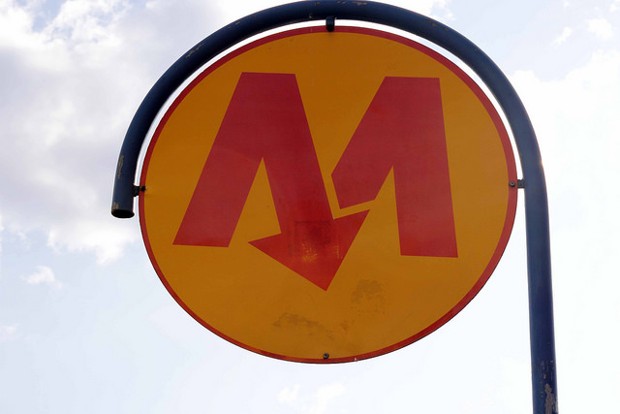
Abstract
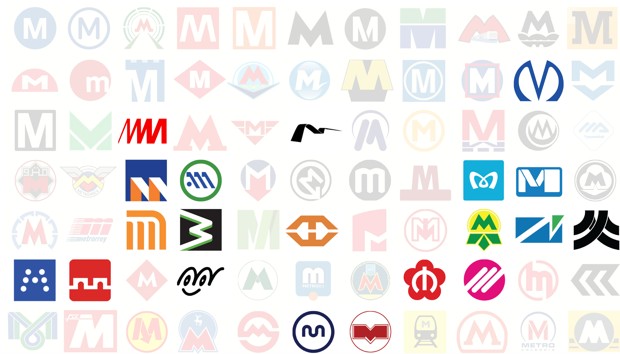
Bierut suspects one reason some transit agencies feel the need to push the envelope on their M design is they feel a need to compete with the corporate dollars shoveled into automobile marketing. “I think that for a lot of these public agencies, there’s an impulse, which may be justified or may be gratuitous, to mimic the way a private sector company would behave,” he says.
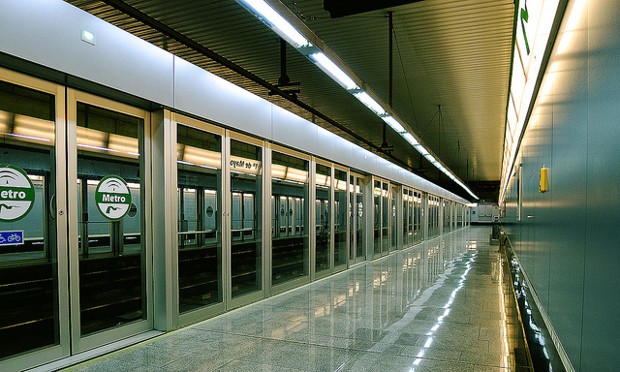
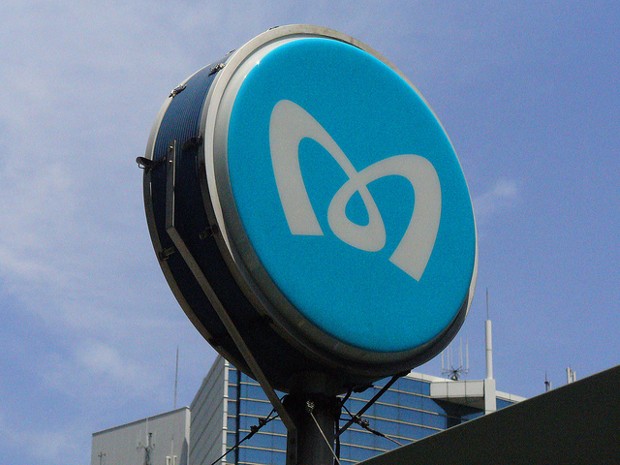
“You get distinctiveness by doing anything,” he says. “Then if you wanted to make it memorable and appropriate, making that point of distinction plausibly mean something is the next step.”
Let’s just hope the fine folks at the Kiev metro, with their underwear logo design, weren’t going for meaningful symbolism.
Logos in top graphic (left to right):
Row 1: Baltimore, Paris, Baku, Genoa, Helsinki, Kryvyi Rih (Ukraine), Los Angeles, Miami, Kharkov (Ukraine), Dneprovsk (Ukraine), Newcastle.
Row 2: Lyon (France), Valencia (Spain), Amsterdam, Barcelona, Almaty (Kazakhstan), Rio de Janeiro, Rotterdam, Rouen (France), St. Louis, Saint Petersburg, Sofia (Bulgaria).
Row 3: Washington, D.C., Yekaterinsburg (Russia), Malaga (Spain), Tblisi (Georgia), Prague, Seville, Santo Domingo (Dominican Republic), Toulouse, Wuhan (China), Chiba (Japan), Algiers.
Row 4: Cairo, Bucharest, Brasilia, Athens, Istanbul, Budapest, Rennes (France), Copenhagen, Tokyo, Brussels, Tashkent (Uzbekistan).
Row 5: Novosibrisk (Ukraine), Monterrey, Mexico City, Medellin, Maracaibo (Venezuela), Manila, Lisbon, Lille, Kiev, Valparaiso (Chile), Recife (Brazil).
Row 6: Perugia (Italy), Xian (China), Ankara (Turkey), Naha (Japan), Kazan (Russia), Bresica (Italy), Samara (Russia), Nanjing, Lausanne (Switzerland), Hangzhou, Marseille.
Row 7: Fortaleza (Brazil), Catania (Italy), Warsaw, Nizhny Novgorod (Russia), Shanghai, Porto, Minsk (Belarus), Daejeon (South Korea), Moscow, Valencia (Venezuela), Liverpool.
Nenhum comentário:
Postar um comentário